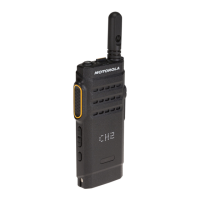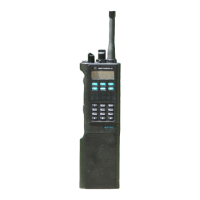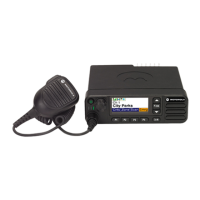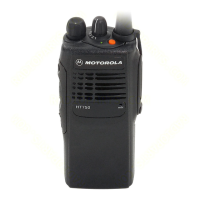NOTICE: The cell re-selection is undeclared in a strict TETRA case. However, the SNDCP
protocol defines a procedure for reconnecting the packet data service on the new cell. In this
case, the cell re-selection procedure resembles the unannounced cell re-selection procedure.
2.12.1
Voice and Data Support
The radio can alternate voice and packet data service. However, voice and data running in parallel are
not supported. This behavior corresponds to Packet Data Type B - IP dual mode.
If the SwMI rejects the context activation due to PD MS type not supported, the radio re-initiates
context activation indicating that supports Type C. It is done to accommodate legacy SwMIs that uses
an older definition of these types.
The radio can operate in one of the voice-data interaction modes.
Voice Only Mode
You can select Voice Only mode, in which PD service is disabled. If an external application
attempts to start up in this mode, PD registration for a wide link is rejected. If the PD service is
active when this mode is selected, the radio deactivates PD. The PEI operates in the local mode
only (data transfer between TE and MT).
Data Only Mode
You can select Data only mode, in which normal voice calls are not permitted. Incoming non-
emergency voice calls are rejected, and you cannot initiate non-emergency voice calls. Incoming
and outgoing emergency calls are allowed.
Voice and Data Mode
In Voice and Data mode any voice call activity that occurs during a data session takes priority over
the PD. Once a voice call has interrupted the data session, the PD session is suspended, until the
voice activity has ended. Then the session is resumed. Voice priority mode is the default mode.
You can choose one of the interaction modes. The choice of interaction mode is stored in non-volatile
memory and remembered at power-up.
In Voice and Data mode, if the radio moves to the traffic channel due to the voice service, the radio
terminates any active packet data transmission or reception. The data service is suspended. The data
service resumes when the voice service ends.
The radio accepts any downlink Short Data Service (SDS) message received on the Packet Data
Control Channel (PDCH). The radio can send uplink SDS messages on the PDCH.
The radio allows PEI, GNSS, and packet data applications to activate and use the packet data context
simultaneously. The first application initiates PD context activation. The next PD context activation from
another PD application results in sending a reply indicating that the PD context is active. When GNSS
and PEI PD applications are using the active PD context, the radio can filter the downlink IP packets
based on their TCP/UDP port.
• UDP packets addressed to the GNSS port (configured in the codeplug) are routed to the GNSS
internal application.
NOTICE:
When activating another PD context on the radio, use the same settings in both PD
contexts.
MN002955A01-AA
Chapter 2: Services and Features
Send Feedback 37
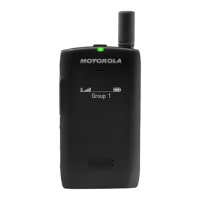
